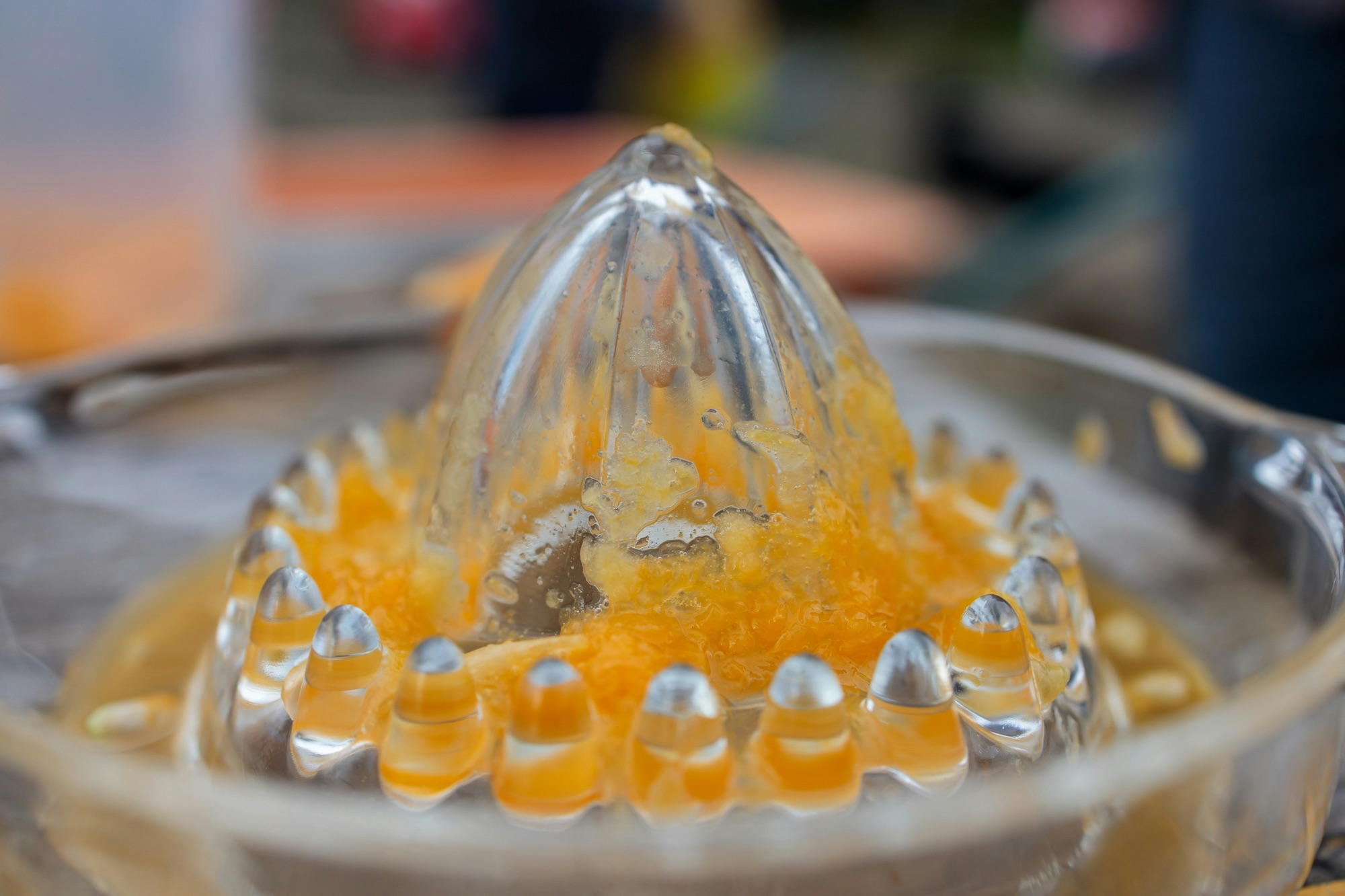Manual citrus squeezers are a staple in many kitchens, cherished for their simplicity and effectiveness in extracting fresh juice from citrus fruits like lemons, limes, and oranges. Despite requiring some muscle power, these handy tools are known for their high efficiency, ensuring you get the most out of your citrus fruits without unnecessary wastage. What’s more, they offer a tactile and satisfying way to engage with your food, providing a direct connection to the ingredients you’re working with. Let’s dive deeper into the world of manual citrus squeezers to uncover the nuances of their design, usage, and the delightful benefits they bring to the table.
Understanding Manual Citrus Squeezers
Manual citrus squeezers come in various designs, but they all share a common goal: to extract juice efficiently and effortlessly. The basic design typically includes a hinged mechanism that, when pressed, squeezes the juice out of the fruit. Some models may include additional features like built-in strainers to catch seeds and pulp, enhancing the overall juicing experience.
Types of Manual Citrus Squeezers
- Handheld Squeezers: These are compact and easy to use, perfect for quickly juicing a lemon or lime. They’re ideal for small quantities and can be easily stored in a kitchen drawer. The simplicity of squeezing directly over a dish or a measuring cup makes them a favorite for quick tasks.
- Reamers: These come in both handheld and countertop versions and involve pressing and twisting the fruit against a ridged cone to extract juice. The design allows for control over the juicing process, making them versatile for both small and large fruits.
- Presses: Larger and more robust, these are great for juicing larger fruits like oranges and grapefruits. They often come with levers that make the pressing action easier, reducing the manual effort required. These are perfect for those who enjoy freshly squeezed juice in larger quantities, such as for breakfast gatherings or brunches.
Efficiency Compared to Electric Juicers
When it comes to juicing efficiency, manual citrus squeezers can hold their ground against electric juicers, especially for small-scale tasks. Electric juicers, while often faster, can be overkill for a single lemon or lime. Here’s a closer look at how manual squeezers excel:
- Gentler on Fruit: Manual squeezers don’t over-process the fruit, which can lead to bitter oils from the peel being mixed into the juice, especially in electric models. This gentler method preserves the pure, crisp flavor of the juice, which is especially important for delicate citrus like Meyer lemons.
- Juice Yield: Despite their simplicity, manual squeezers often extract more juice per fruit. This is because the manual process allows for better control and precision. With practice, you can develop a knack for maximizing the yield, ensuring that every drop of juice is captured.
- Ease of Cleaning and Maintenance: With fewer parts and no need for electricity, manual squeezers are easier to clean and maintain. A quick rinse or a run through the dishwasher is often all that’s needed. This convenience can be a significant advantage for those who juice frequently and want to minimize cleanup time.
Factors Affecting Efficiency
Several factors can influence how efficiently a manual citrus squeezer operates:
- Fruit Size and Type: Smaller fruits like limes may require more effort to extract juice compared to larger ones like oranges. The type of citrus can also affect how easily juice is extracted. For instance, thicker-skinned citrus like grapefruits may benefit from a reamer or press that can penetrate deeper into the fruit.
- Squeezer Quality: Not all squeezers are created equal. Opt for those made from durable materials like stainless steel or heavy-duty plastic. These materials not only ensure longevity but also provide a better grip and resist corrosion from acidic citrus juices.
- Technique: The way you use the squeezer matters. Applying consistent pressure and using the right motion can significantly impact juice yield. Mastering the art of juicing takes a bit of practice, but once you get the hang of it, you’ll find it both efficient and rewarding.
Choosing the Right Squeezer
When selecting a manual citrus squeezer, consider the following:
- Material: Stainless steel is durable and resistant to rust, while plastic models are lighter and often dishwasher safe. Some high-end models also offer a combination of materials, like rubber grips for comfort and stainless steel for durability.
- Ergonomics: Look for a design that’s comfortable to hold and requires minimal effort to operate. Ergonomic handles can reduce strain on your hands, especially when juicing multiple fruits at once.
- Size Compatibility: Ensure the juicing cup or reamer can accommodate the size of the fruits you typically juice. Some squeezers come with interchangeable heads to handle different fruit sizes, offering versatility in your kitchen.
Tips for Maximizing Efficiency
Getting the most out of your manual citrus squeezer involves a bit of technique and know-how. Here are some tips:
- Fruit Preparation: Before juicing, roll the fruit on a countertop with your palm. This breaks down internal membranes and makes juicing easier. You can also microwave the fruit for 10-15 seconds to soften it, which can help in extracting more juice.
- Cutting Technique: Halve the fruit along its equator for maximum juice exposure. For larger fruits, consider cutting into quarters. This method increases the surface area, allowing the squeezer to apply pressure more effectively.
- Steady Pressure: Apply even pressure without over-squishing. This prevents the juice from becoming bitter due to oils from the peel. A steady hand ensures that the juice flows smoothly into your container without any unwanted splatter.
- Rotating Motion: While squeezing, rotate the fruit slightly. This helps release more juice and ensures that all segments are fully pressed. This technique is particularly useful when using a reamer, as it ensures complete extraction from each segment.
- Use Ripe Fruits: Ripe fruits are softer and juicier, making them easier to squeeze and yielding more juice. If possible, select fruits that feel heavy for their size, as this indicates a higher juice content.
- Temperature Matters: Juicing fruits at room temperature can result in a higher yield compared to those that are cold from the fridge. Allow your citrus fruits to sit out for a bit before juicing.
Common Mistakes to Avoid
Even with a manual citrus squeezer, there are some pitfalls to watch out for:
- Over-Squeezing: Applying too much pressure can crush the peel, releasing bitter oils into the juice. This is a common mistake that can easily be avoided by practicing the right amount of pressure.
- Underestimating Fruit Size: Trying to juice a large orange with a small squeezer can lead to frustration and wasted juice. Ensure your squeezer is adequately sized for the fruits you plan to juice.
- Ignoring Ripeness: Juicing unripe fruits not only yields less juice but can also produce a sour, less appealing flavor. Always choose fruits that are at their peak ripeness for the best results.
- Neglecting Maintenance: While manual squeezers are low maintenance, neglecting to clean them properly can lead to residue buildup, affecting performance over time. Regular cleaning ensures your squeezer remains effective and hygienic.
Real-World Examples
Consider the case of a home cook who regularly uses a handheld squeezer for making fresh lemonade. By choosing a high-quality stainless-steel model and employing the rotating technique, they’re able to consistently produce large batches of lemonade with minimal effort and waste. Their lemonade has become a staple at family gatherings, praised for its refreshing, pure taste.
Another example is a small café that opted for a countertop citrus press. This choice allowed them to efficiently juice a variety of fruits for their breakfast menu, offering fresh-squeezed orange and grapefruit juices that patrons love. The press’s sturdy construction and ergonomic lever make it easy for staff to use throughout the busy morning rush, enhancing the café’s reputation for quality and freshness.
The Environmental Impact
Manual citrus squeezers are not only efficient but also environmentally friendly. They require no electricity, reduce appliance waste, and encourage the use of fresh produce over pre-packaged options. By choosing a manual squeezer, you’re making a small but positive impact on your carbon footprint. This choice aligns with a growing trend towards sustainable living, where every small action contributes to a larger environmental benefit.
Exploring Cultural Significance
In many cultures, fresh citrus juice plays a significant role in daily life and culinary traditions. From the zesty lime used in Mexican cuisine to the sweet oranges in Mediterranean dishes, manual citrus squeezers have been a part of kitchens worldwide, cherished for their ability to deliver fresh, flavorful juice effortlessly. These tools bridge the gap between tradition and modern convenience, allowing for the preservation of authentic flavors.
Innovations and Trends
The world of manual citrus squeezers is not immune to innovation. Recent trends have seen the introduction of squeezers with ergonomic designs that reduce hand fatigue, and models with dual gears for increased leverage. Some even incorporate features like measuring cups and pour spouts, making them multifunctional and even more convenient for culinary enthusiasts.
Personal Insights and Experiences
From my own experience, investing in a quality manual squeezer has transformed my approach to cooking and entertaining. The process of hand-juicing has become a therapeutic ritual, offering a moment of mindfulness in the kitchen. Whether it’s drizzling fresh lime over a taco or crafting the perfect citrus dressing, the manual squeezer is a trusted ally in my culinary adventures.
Conclusion
Manual citrus squeezers are efficient, practical tools that offer a simple yet effective way to enjoy fresh citrus juice at home. By understanding the nuances of different squeezer types, employing proper techniques, and avoiding common mistakes, you can maximize juice extraction and savor the fresh taste of homemade citrus beverages. Whether you’re a casual home cook or a small business owner, investing in a quality manual citrus squeezer can enhance your culinary experience and promote a more sustainable kitchen practice.
Ultimately, the joy of using a manual citrus squeezer lies not just in the juice it produces, but in the connection it fosters to the food you prepare, enriching both your culinary creations and your appreciation for the simple pleasures of kitchen life.




